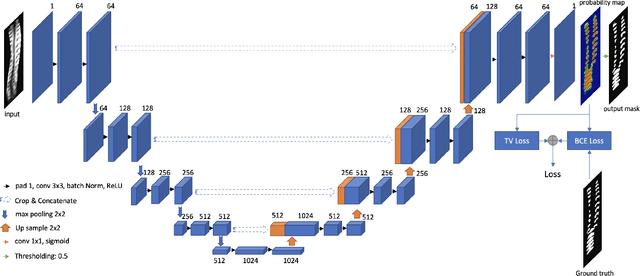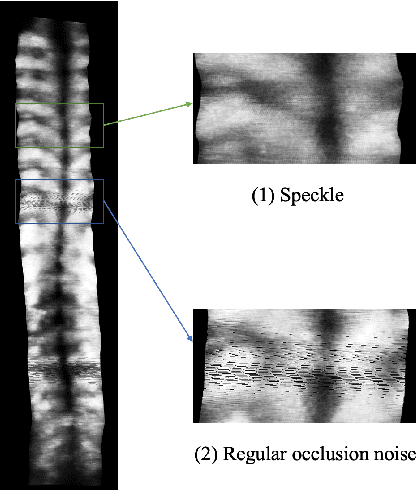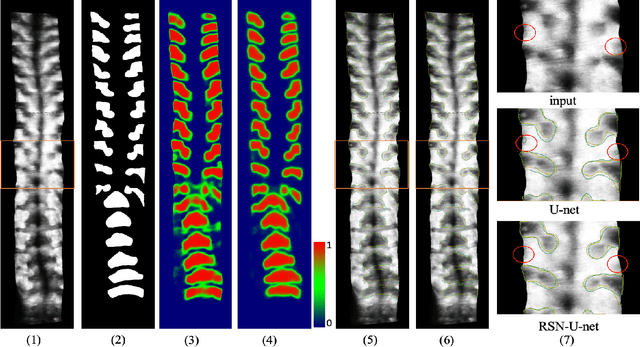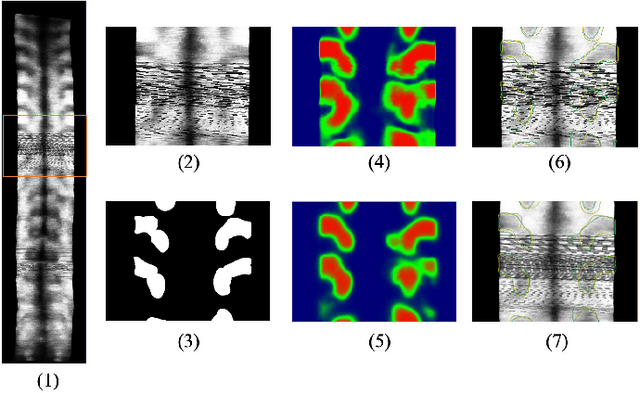Timothy Lee
Bone Feature Segmentation in Ultrasound Spine Image with Robustness to Speckle and Regular Occlusion Noise
Oct 08, 2020



Abstract:3D ultrasound imaging shows great promise for scoliosis diagnosis thanks to its low-costing, radiation-free and real-time characteristics. The key to accessing scoliosis by ultrasound imaging is to accurately segment the bone area and measure the scoliosis degree based on the symmetry of the bone features. The ultrasound images tend to contain many speckles and regular occlusion noise which is difficult, tedious and time-consuming for experts to find out the bony feature. In this paper, we propose a robust bone feature segmentation method based on the U-net structure for ultrasound spine Volume Projection Imaging (VPI) images. The proposed segmentation method introduces a total variance loss to reduce the sensitivity of the model to small-scale and regular occlusion noise. The proposed approach improves 2.3% of Dice score and 1% of AUC score as compared with the u-net model and shows high robustness to speckle and regular occlusion noise.
Classification of Radiology Reports Using Neural Attention Models
Aug 22, 2017



Abstract:The electronic health record (EHR) contains a large amount of multi-dimensional and unstructured clinical data of significant operational and research value. Distinguished from previous studies, our approach embraces a double-annotated dataset and strays away from obscure "black-box" models to comprehensive deep learning models. In this paper, we present a novel neural attention mechanism that not only classifies clinically important findings. Specifically, convolutional neural networks (CNN) with attention analysis are used to classify radiology head computed tomography reports based on five categories that radiologists would account for in assessing acute and communicable findings in daily practice. The experiments show that our CNN attention models outperform non-neural models, especially when trained on a larger dataset. Our attention analysis demonstrates the intuition behind the classifier's decision by generating a heatmap that highlights attended terms used by the CNN model; this is valuable when potential downstream medical decisions are to be performed by human experts or the classifier information is to be used in cohort construction such as for epidemiological studies.
Lexicon Integrated CNN Models with Attention for Sentiment Analysis
Aug 22, 2017



Abstract:With the advent of word embeddings, lexicons are no longer fully utilized for sentiment analysis although they still provide important features in the traditional setting. This paper introduces a novel approach to sentiment analysis that integrates lexicon embeddings and an attention mechanism into Convolutional Neural Networks. Our approach performs separate convolutions for word and lexicon embeddings and provides a global view of the document using attention. Our models are experimented on both the SemEval'16 Task 4 dataset and the Stanford Sentiment Treebank, and show comparative or better results against the existing state-of-the-art systems. Our analysis shows that lexicon embeddings allow to build high-performing models with much smaller word embeddings, and the attention mechanism effectively dims out noisy words for sentiment analysis.
 Add to Chrome
Add to Chrome Add to Firefox
Add to Firefox Add to Edge
Add to Edge